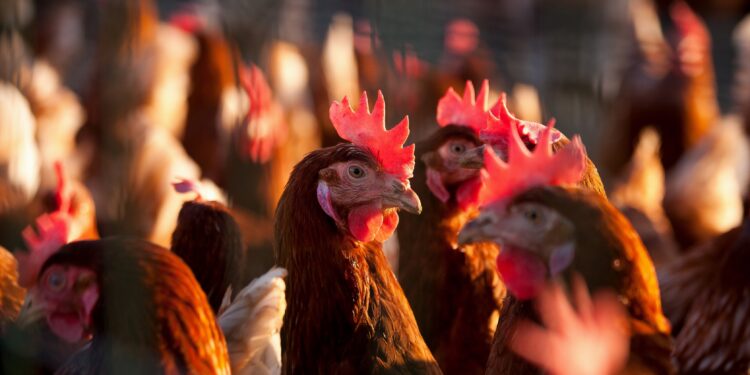Benefits by re-used as bedding at chicken farming?
The re-use of one saves bedding material in the breeding of chickens only costs, they can also growth of infectious agents such as Salmonella prevent. This finding is important, because the consumption of chickens around the world continues to grow.

In a study involving the University of Georgia, it was found that a re-use of one breeding bedding material in the chicken helps to reduce the occurring growth of pathogens. The results of the study were published in the English journal “Journal of Environmental Quality”.
Of doubt, in the case of re-use of bedding material
Broiler chickens need to have for your breeding millions of tonnes of litter or bedding material. There have been concerns about health and safety, if it was a re-use of this material. The results of the new investigation to dispel previous doubts.
Samples of re-used litter were analyzed
The Team collected samples of the used poultry litter from the poultry research centre of the University of Georgia. This litter was used, with three flocks of broiler chickens to raise, under conditions as they prevail in broiler farms. Each sample represented a unique litter environment.
Samples were contaminated with Salmonella
In the laboratory, the properties of the one were analyzed litter samples. The researchers of each of the samples Salmonella is added to the ends. Thereafter, the samples were examined on the content of Salmonella, other bacteria and physical properties. Within two weeks after the addition of Salmonella, most of the samples developed biomes predictable Micro. Certain microbes, such as Nocardiopsis bacteria, seemed to reduce the growth of Salmonella.
Used poultry litter can inhibit the growth of Salmonella
The new study shows that the use of a re-used one of pathogens in the bedding material in the rearing of poultry, the growth of disease such as Salmonella can be prevented. So far, poultry breeders assumed that the material has a re-use of litter, a negative impact on food security. The results of the current research show exactly the opposite, reports the researchers. There are bacteria in the used poultry litter, which can hinder the growth of Salmonella.
Humidity and ammonia content were examined
“It might be worthwhile to invest time and resources in order to characterize the bacteria in re-used litter,” explains study author Adelumola Oladeinde from the U.S. National Poultry Research Center in a press release. These bacteria could be used to develop useful microbes for better intestinal health of chickens, adds the expert. The study in addition, litter properties, such as moisture and ammonia content. These properties can affect the scattering Microbiome (the mix of bacteria, fungi and viruses in the litter) dramatically.
Why is litter important for the health of chickens?
The results of the study provide new information about the relationship between the physical environment of the litter and your Microbiome. Techniques, which take into account both of these factors can contribute to Salmonella can be reduced in chickens, reports the researchers. Litter a large role in determining the health of the mast plays chicken. After a fattening, is chicken arrives on a farm, it spends the next few weeks, usually a lot of time to feed on litter.
Chicks eating litter
Actually, the Chicks start to eat litter, before they eat from feed troughs or drinking. The litter existing Microbiome is to speculate, therefore, probably the first inhabitants in the intestines of the chick, the researchers. These first microbes play a key role in determining the gut health. Therefore, it is crucial to, as a useful cluster-Microbiome looks like,” explains study author Adelumola Oladeinde.
Why reduced the re-use of spreading Salmonella?
Some types of re-used litter occurring Nocardiopsis bacteria are known to produce natural antibiotics and toxins. These Compounds could keep the level of Salmonella in the litter samples is low, explain the researchers.
What is the influence of the failure time?
A key aspect in the re-use of litter, the time until re-use. This waiting time is referred to as the bedding-down time. A shorter failure time for breeders to be able to be raised in the course of the year, and more animals. So far, however, only little is known about how the downtime will affect the litter Microbiome.
Two weeks of downtime are sufficient?
The results of the study show that an investigation of the concentration of certain bacteria may help determine whether there is sufficient downtime occurred. This could be for farmers and breeders a great help. The study showed that recycled one had litter after two weeks of downtime, a Microbiome, which was for Salmonella unfavorable.
Further research is needed
The experiments should be repeated, according to the researchers, in the future, with litter from a variety of sources. There are also more strains of Salmonella tested. Such studies will provide important information about the mechanisms underlying the re-use of litter and the reduction of Salmonella. (as)